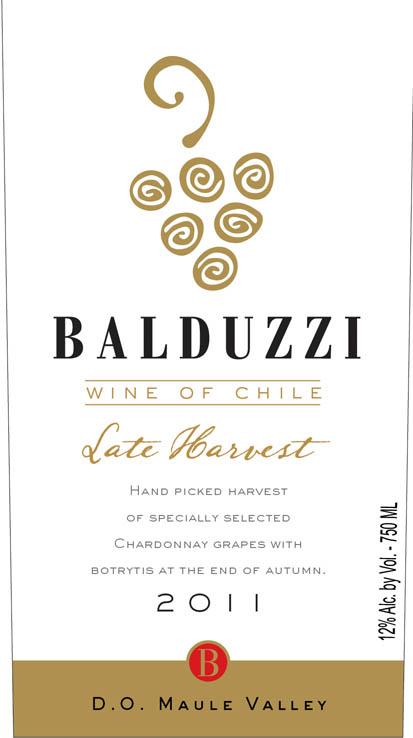2011 Maule Valley Chardonnay
The Balduzzi Late Harvest 2011 Chardonnay from the picturesque Maule Valley is a delightful expression of this beloved varietal. This enchanting white wine showcases a full body complemented by a high level of acidity, bringing a refreshing brightness to each sip. The fruit intensity is pronounced, with vibrant notes of ripe tropical fruits and honeyed sweetness that mingle beautifully on the palate. With a pleasing off-dry profile, this late harvest offering is well-balanced, making it perfect for both standalone enjoyment or as a delightful pairing with desserts. The wine exhibits a rich texture, supported by soft, nuanced tannins that add depth and complexity, creating a truly memorable tasting experience.
The Balduzzi Late Harvest 2011 Chardonnay from the picturesque Maule Valley is a delightful expression of this beloved varietal. This enchanting white wine showcases a full body complemented by a high level of acidity, bringing a refreshing brightness to each sip. The fruit intensity is pronounced, with vibrant notes of ripe tropical fruits and honeyed sweetness that mingle beautifully on the palate. With a pleasing off-dry profile, this late harvest offering is well-balanced, making it perfect for both standalone enjoyment or as a delightful pairing with desserts. The wine exhibits a rich texture, supported by soft, nuanced tannins that add depth and complexity, creating a truly memorable tasting experience.




